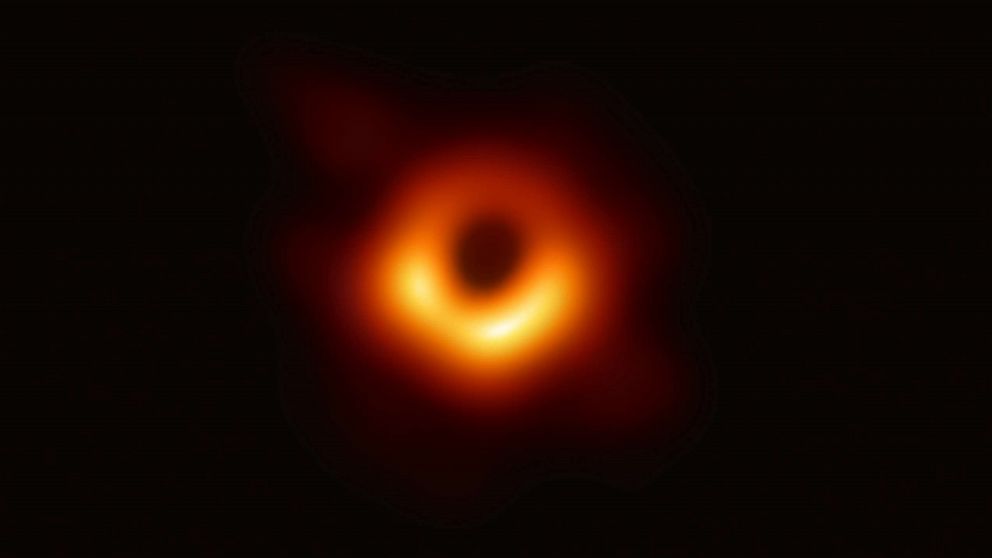The first photo of a black hole is finally here
It's in a galaxy really far, far away.
We finally know what a black hole looks like.
After decades of conjecture and simulations, an international consortium of scientists released the first ever photos of a black hole on Wednesday.
"We have seen what we thought was unseeable. We have seen and taken a picture of a black hole," Shep Doeleman, Event Horizon Telescope project (EHT) director, said as he revealed the photos at a press conference in conjunction with the National Science Foundation in Washington, D.C.
The never-before seen black hole is in a galaxy far, far away, called Messier 87 (M87). It's at about the center of that galaxy, and about 53 million light years from Earth. (One light year is 5.9 trillion miles, or 9.5 trillion kilometers, away). It's also massive -- about six billion times the mass of our sun.

The EHT is a global network of radio dishes that effectively turn Earth into a virtual telescope. In addition to the briefing in Washington, there were simultaneous announcements in Brussels, Santiago, Shanghai, Taipei and Tokyo.
Black holes are so massive they warp space and time and allow no light to escape. Even though a black hole itself is not visible directly, the photos confirmed expectations it would be surrounded by dust and gas swirling around it at velocities near the speed of light, which causes the detectable emission of radiation. The event horizon is the boundary of a black hole.
"This has been our first chance to see the inner workings of black holes and to test a fundamental prediction of Einstein's Theory of General Relativity. Not only the existence of a shadow that indicates a point of no return -- or an event horizon -- but also the size and shape of that shadow," Feryal Ozel, an astrophysicist at the University of Arizona who was the modeling and analysis lead on the project, told ABC News.
"It's a dream come true, on many levels," Ozel said. "Something I've been working on for many, many years, trying to build a physical model of a black hole environment and predictions, and the opportunity to study the hearts of black holes is amazing. This kind of resolution in astronomy is unprecedented. This is up to a million times better than some other telescopes."
It wasn't until late summer 2018 that "we knew we had an image that looked like what we hoped it would look like. Just collecting data, just getting the data from the South Pole -- just that took six months. It was close to a year and half we just worked on it," Ozel said.
Doeleman added that the photo was consistent with the simulations and predictions based on Albert Einstein's calculations.
The EHT project embarked on a 10-day mission in April 2017 to "capture the image of the supermassive black hole at the center of the Milky Way galaxy," according to an NSF press release at the time.
"Obtaining an image of a black hole is not as easy as snapping a photo with an ordinary camera," the National Radio Astronomy Observatory, a U.S. research center, wrote on its website. "The supermassive black hole at the center of our galaxy, called Sagittarius A*, has a mass of approximately four million times that of the Sun, but it only looks like a tiny dot from Earth, 26,000 light-years away."
There's more discovery to come: the EHT team hopes to reveal a photos of the black hole in our own galaxy, Sagittarius A*, at a later date.
"The black hole at the center of the Milky Way, our own galaxy, we're still analyzing that. We are hoping to have images and perhaps changing images. We want to do further tests of general relativity with what we have," Ozel said.




